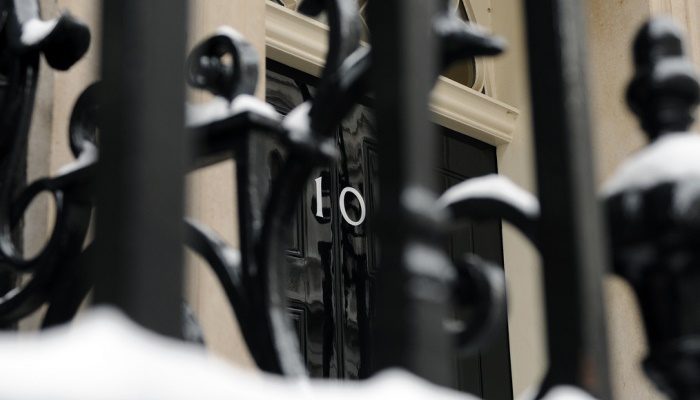
The Black Door: Spies, Secret Intelligence and British Prime Ministers
By Richard J. Aldrich and Rory Cormac
London: Harper Collins Publishers, 2016
Given the inherent secrecy surrounding intelligence, no book can provide more than a glimpse into this often mythicized and misunderstood world. In The Black Door, Richard J. Aldrich and Rory Cormac broach the subject from the perspective of the relationship between Prime Minister and the Intelligence Services. The authors follow the parallel institutional developments of central government and the Intelligence Services. In doing so they elucidate how external shocks, internal rivalries, and technological advances shaped the ever-changing relationship. Aldrich and Cormac offer a historical evaluation of subsequent Prime Minister’s ability to interact with, manage and use intelligence. However, they do not explicitly lay out a set of criteria with which to evaluate them against. Despite this, throughout the book, it is clear that their ideal-type relationship would have institutionalised mechanisms for close communication between producers and consumers, and a mutual understanding of the delineated roles each actor plays. The authors’ chastisement of informal arrangements favoured by Tony Blair (p. 497), and their appreciation of enhanced institutional coordination, like David Cameron’s introduction of the National Security Council demonstrates this (p.458).
Drawing on a vast array of archival, oratory, and secondary sources, the authors start with Herbert Asquith and the establishment of the Secret Service Bureau, following chronologically through the twentieth century up to Cameron’s premiership. Each chapter offers a brief insight into the personality and leadership style of the Prime Minister, which in turn informs the reader how they interact with the intelligence services and manage government more generally. These discernments are artfully weaved with the key events which transpired during each administration. Despite the breadth of coverage attempted, the book manages to provide sufficient context so that analysis is grounded in robust evidence and explanation.
The overarching thrust of The Black Door is that effective intelligence requires a centralised ‘brain’ in order to organise, process and disseminate intelligence to senior decision-makers in a timely fashion. This concept recurs throughout the book and the author’s signpost events or persons which advance or hinder this becoming realised. Aldrich and Cormac lambast Stanley Baldwin, Ramsey MacDonald, and Neville Chamberlain. Each overlooked prescient assessments from the small Industrial Intelligence Centre, an early “seed of the centralised analysis” which was unnoticed in part because no entity existed to centralise and coordinate intelligence (p. 62). Conversely, certain Prime Ministers are noted for their contributions towards achieving this centralised ‘brain’. Winston Churchill is credited for innovating covert operations, championing GCHQ and bringing the Joint Intelligence Committee (JIC) closer to Downing Street (p. 133-134). Attlee built on these foundations, instituting the Committee of Permanent Secretaries on the Intelligence Services, which would serve as the planning body for Britain’s intelligence community for the next fifty years (p. 159). Harold Wilson also made important advances towards a centralised ‘brain’ (p. 282 -284). His adoption of an intelligence coordinator within Cabinet marked a significant advance to this aim. This point has been somewhat downplayed in other accounts of this subject (Young 1998; O’Haplin 2007).
Aldrich and Cormac make significant contributions to the existing literature on this subject by approaching the evolution of British intelligence through the relationship between the intelligence services and Downing Street. Using this method to illuminate the challenges and opportunities posed by overseeing an inherently secretive state instrument,
the reader is able to follow a narrative of key figures in senior positions from both the political and intelligence side. This gives continuity to the book in what could otherwise be an ad-hoc chronology of intelligence related events. Considering the subject matter, the authors successfully avoid sensationalist accounts of what could be portrayed as a glamorous, shadowy world. However, it is not dry in any sense and provides ample titbits which cheerfully cause the reader to ponder the veracity of such fascinating details (p. 97, 138, 243).
The authors pass judgement from the enviable position of hindsight, able to choose persuasive arguments in support of their conclusions about the past. Nonetheless, this exercise is important because our collective history serves as a roadmap to future leaders in what to do and not to do. Scarred memories of the Snowden leaks, torture revelations and WMD dossiers will no doubt loom large on the minds of Prime Ministers for years to come.
Given the focus is highly personalised, the format of following Prime Ministers chronologically is reasonable. The careful use of personal diaries, memoirs and secret interviews means that the authors are able to shed light on the intentions behind some decisions made by key actors throughout the period. Despite the length the book and the breadth of issues discussed, it nonetheless lacks a degree of theoretical appreciation. The underlying question about how the relationship between intelligence producers and consumers should function has been tackled by students of intelligence studies since its inception (Davis 1991 p. 91-103). The authors only address this normative question briefly at the end (p.492). If their position was laid out a priori, the reader would benefit from contrasting the evidence with these assumptions throughout the book.
In sum, this book provides a well-researched, authoritative account of the history of intelligence services and their often tumultuous interactions with Downing Street. They conclude that external factors are the driving force behind genuine change in the intelligence services, for example how technological change influences counter-terrorism efforts (p. 488). As this book was published just prior to the Chilcot inquiry being published, an updated edition in light of this new significant source would be beneficial to interested readers of this subject.
References:
Davis, Jack (1991) The Kent-Kendall Debate of 1949. Studies in Intelligence, p. 91-103.
O’Haplin, Eunan (2007) The British Joint Intelligence Committee and Ireland, 1965-1972, IIIS Discussion Paper No. 211.
Young, John (1998) The Wilson Government. Review of International Studies, Vol. 24, No. 4, p. 545-562.